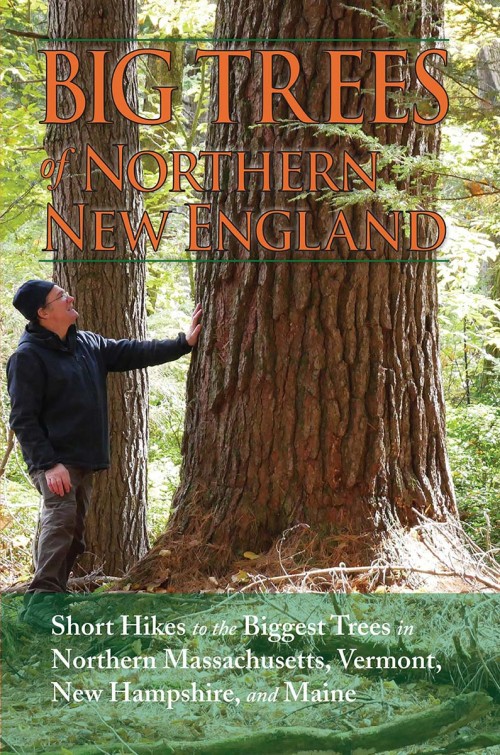by Kevin Martin
Peter E. Randall Publisher, 2022
Short Hikes to the Biggest Trees in Northern Massachusetts, Vermont, New Hampshire, and Maine
If you come across an especially large tree in town or on a hike, and you don’t marvel at its CBH, ACS, or VH, you haven’t read Kevin Martin’s Big Trees of Northern New England: Short Hikes to the Biggest Trees in Northern Massachusetts, Vermont, New Hampshire, and Maine.
As many readers know, CBH stands for “circumference at breast height” – the circumference of the tree measured 4½ feet above the ground. ACS is the “average crown spread,” and VH is the “vertical height.” Martin explains the terms early on, making sure readers have a common terminology as he leads us on a fascinating tour of some of the biggest trees in northern New England.
A wooden boat builder by trade, Martin is also a former coordinator of the New Hampshire Big Tree Program. His passion for wood and trees shines as he takes us to cities and towns, into woods and swamps, along a coastal cliff in Maine, through nature preserves, and onto estates and college campuses. Many beautiful, large trees are in easily accessible locations, where people have intentionally preserved them.
I took Big Trees of Northern New England with me to several sites described in the book. The first of these was the Smith College campus, in Northampton, Massachusetts. The college’s arborists and botanists have been planting and managing trees for more than 150 years, creating a 125-acre haven for tree lovers. Martin’s book provides a walking tour to nine trees on the campus, including four state champions, as registered in American Forests’ Champion Tree Registry: Massachusetts’ largest London planetree, ginkgo, Japanese umbrella pine, and pin oak. Martin includes additional information, such as how to obtain the college’s brochure that features 40 notable trees and their locations.
Martin describes other well-kept sites, such as Tanglewood, a premier music venue in the Berkshires, where readers can see big trees without traveling far from the main paths. For other locations, however, Martin directs big tree hunters up dirt roads, gives GPS coordinates, and sends them bushwhacking into the woods. A few chapters include trees along the Appalachian Trail.
The informative style and conversational tone make the book easy to read in sequence, or to use as a field guide. The book is organized by state, with several chapters included for each state. Each section begins with a map of the state, with circled numbers to locate each profiled big tree. In addition to highlighting specific trees, the short chapters provide human and natural history notes, information about how Martin has used various types of wood in his work, stories about experiences he had while visiting, and details about parking or local restaurants. Martin often travels with family or friends, and he includes plenty of captivating photos of unusual trees.
The book has 58 chapters, many including multiple trees and some describing locations that are near each other. Some routes can be traveled by bicycle. An index by tree type – more than 50 in all – is helpful in selecting where to go. Martin provides both general directions to starting points and specific directions to trees. I sometimes found these directions hard to follow, including in my own town, and a smartphone map and GPS are helpful tools to supplement the book’s information. The only other weakness in this excellent book is that it was not tightly edited and includes some small errors, such as misspellings and inaccurate place names.
As I read Big Trees, I marked many places I want to visit, and I’ve now been to several. Twice, on trips when I needed to drive for a few hours, I selected places near my route where I could take a break and visit some trees. This book is an enjoyable read and a stimulating field guide.


